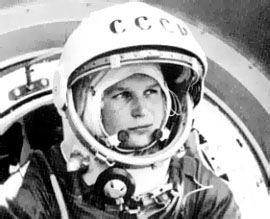Fifty Years Of Human Spaceflight
Yuri Gagarin's single orbit of Earth 50 years ago this month ushered in the era of human spaceflight.
Gagarin's 108-minute flight was another major propaganda coup for the Soviet Union, which had successfully launched the first satellite - Sputnik - in 1957.
"I was a young fighter pilot in Germany I was flying F-102s in Rammstein Germany. We were more focused on the building of the Berlin Wall that year, rather than the space race," says Nasa astronaut Charles Duke, who walked on the Moon during the Apollo 16 mission in 1972.
"When he flew, my first impression was - well, they beat us again."
Sergei Khrushchev, the son of Nikita Khrushchev, who was the Soviet premier at the time of Gagarin's flight, told BBC News: "We were very proud but we did not really understand how important it was. It was one more flight, one more achievement."
But he says his father was acutely aware of the significance, and orchestrated a celebration in Red Square upon Gagarin's return to Moscow.
"When we look at the response of the Muscovites, where everyone was in the streets, on the roofs of buildings and in the windows, I would compare this celebration with the May 9 victory day (the end of World War II for the Soviet Union)," says Sergei.
During the Cold War, such "firsts" were used by the USSR to claim technological might and ideological superiority.
But the architects of both the US and Soviet space programmes had loftier ambitions of sending humans on voyages around the Solar System.
The Americans and the Soviets experimented by sending animals into space prior to launching people.
Despite several notable failures, the successful tests signalled that humans were capable of surviving the stresses of spaceflight.
Yuri Gagarin was one of 19 prospective cosmonauts selected for the Soviet space programme in 1960. The list was eventually whittled down to two: Gagarin and fellow test pilot Gherman Titov.
It has been suggested that Gagarin's humble upbringing may have tipped the scales in his favour. While Titov came from a middle-class background, Gagarin was the son of workers. The Soviet leadership may have regarded this as a demonstration that, under communism, even those who came from modest families could succeed.
But others insist that the cosmonauts' performance during the selection process was much the more important factor.
In early 1961, US astronaut Alan Shepard had been training for a sub-orbital flight on a Mercury-Redstone rocket scheduled for May that year.
The Soviets were not aware of the schedule, but Sergei Korolev, chief scientist for the USSR's space programme, was worried the US would be first and pushed for a manned launch as soon as possible.
'Here we go'
On the morning of 12 April 1961, the 27-year-old Gagarin was waiting to be launched into space atop a 30m-high booster at the Tyuratam test range in Kazakhstan (now the Baikonur Cosmodrome).
As the rocket blasted off at 0907 local time, Gagarin reportedly said "Poyekhali", or "here we go".
Click here to read more.


